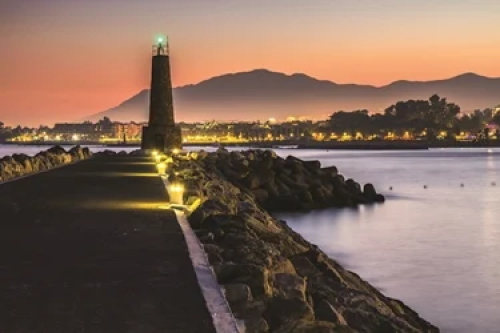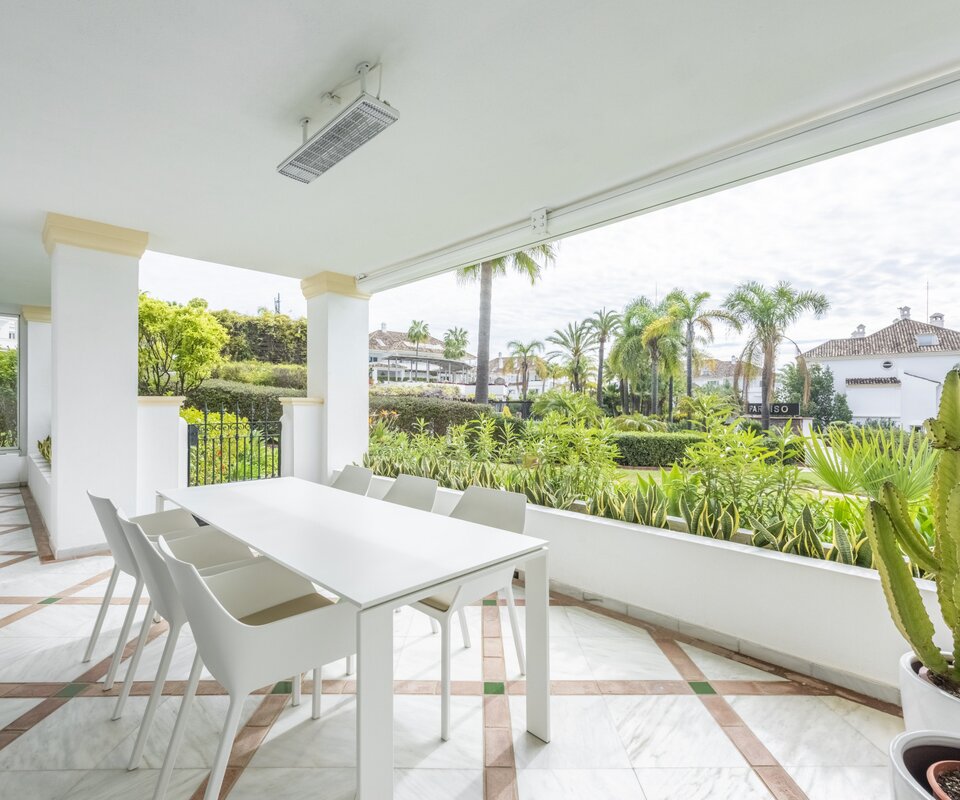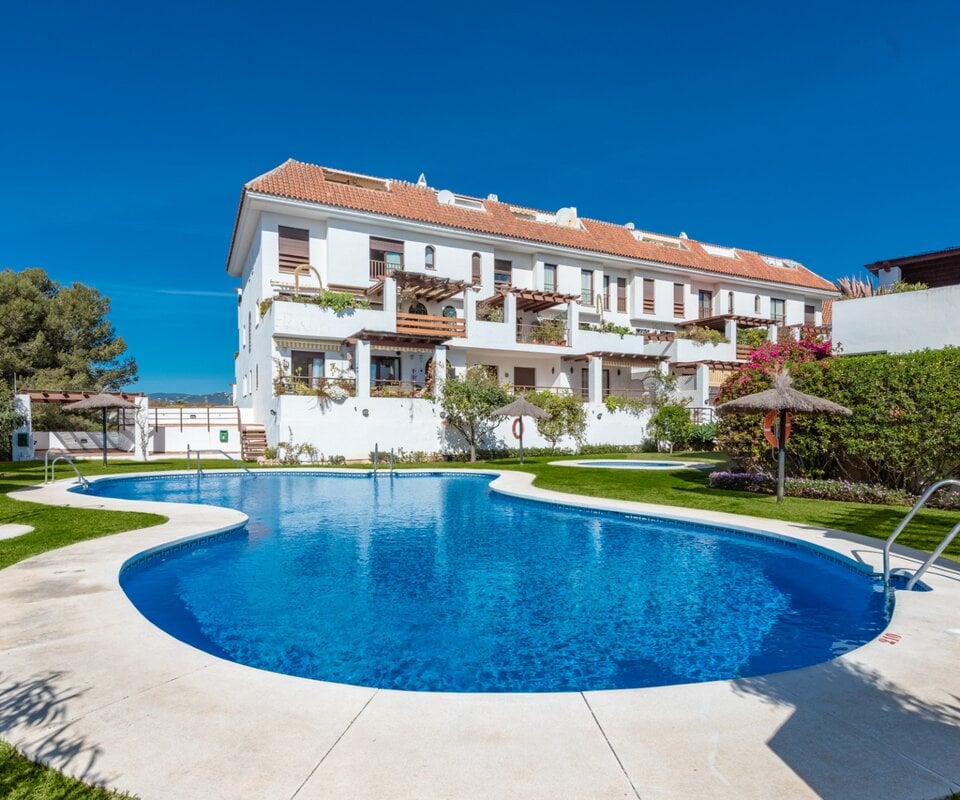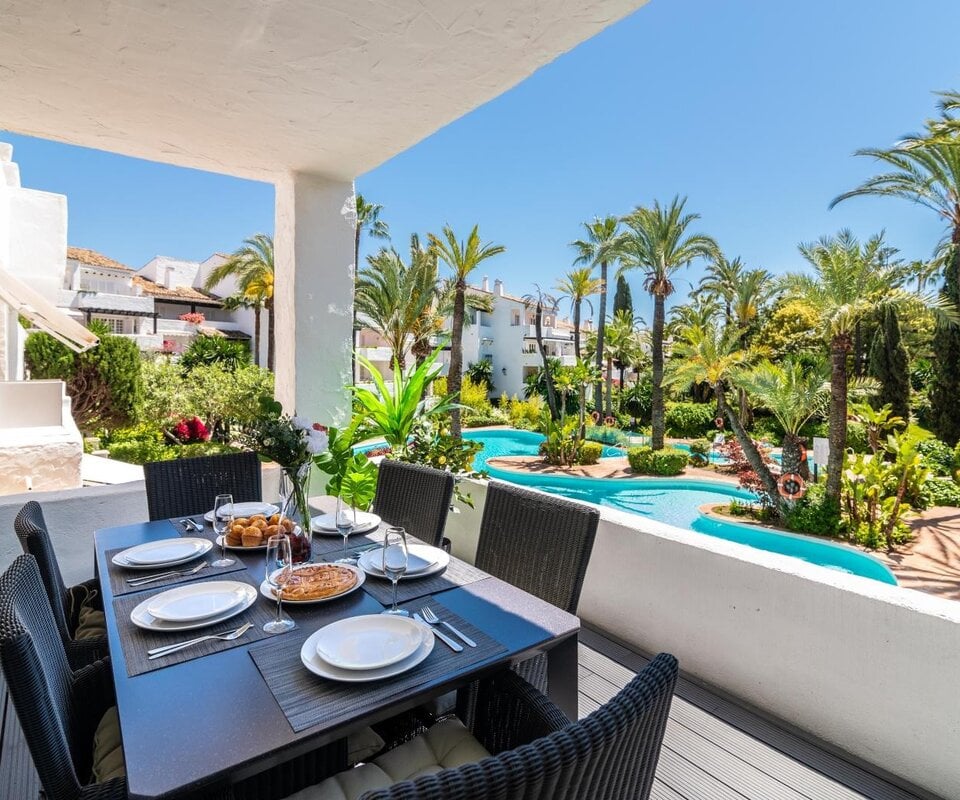
Marbella Property Market Report 2016

Christopher Clover has been writing about Marbella property for over 46 years
The Marbella property market is now well into its fifth straight year of recovery, after the bubble burst at the end 2007 and 2008. The number of residential sales in 2015 increased by 9.83 % over the sales volume of 2014 and has almost achieved the volume of the pre-crisis year of 2006, and prices are starting to climb once again in Marbella’s most in-demand residential areas.
There is a similar scenario throughout all of Spain, although recovery on a national level is a couple of years behind Marbella whose “head start” to recovery is a result of its “multi-country” source market – whereas the national market is mainly comprised, as one might expect, of Spanish buyers and sellers. As a result, it is safe to say that the property market recovery in Spain, in this current economic cycle, began in Marbella.
Here we list some of the key market Indicators:

1. Sales Volume
As one can see from the accompanying chart, the number of sales in Marbella reached 4,390 properties sold in 2015, less than one percent short of the number of sales in the pre-crisis boom year of 2006 when 4,432 properties were sold.
It is interesting to note that the rate of increase of sales in 2015 over the prior year has dropped compared with the increase of sales in 2014 over 2013, which was an astounding 28.3%. The explanation is a simple one: there existed a strong pent-up demand for properties in Marbella with buyers waiting for the bottom of the market before buying. During 2012 and 2013 it became evident that the market bottomed-out in 2011 and the bargain-seeking buyers rushed to purchase properties before prices started rising once again. With most of that pent-up demand satisfied, the rate of growth in the number of residential properties sold in 2015 compared to 2014 has consequently dropped to what still remains a healthy 9.83 %.

2. Prices still at affordable 2004 levels
While, according to all published indicators, prices are increasing again, price levels on a national basis are still 28.4% below the peaks (source: www.registradores.org) at approximately 2004 levels. Panorama’s own extensive records, show that prices in Marbella today are about 20% below the peaks, with notable exceptions of some of the best-located properties which have held their prices far better than properties in other locations, and which are only between 10 and 15% away from market peaks.

3. Prices increasing on a national level
Prices rose 4.2% overall in Spain last year, with new homes rising 5.8% and resales 4%. (Source: Instituto Nacional de Estadistica, www.ine.es).
Further evidence of market improvement is provided by the many Marbella-area owners who are beginning to raise their asking prices: in the last year, one out of every three owners who have their properties for sale with Panorama (and are adjusting their asking prices), raised them rather than lowering them.
This is in stark contrast to a general trend of price decreases over the last eight years.
4. Bank foreclosures are significantly lower
The number of permanent residences foreclosed by banks nationally, dropped by 13% in 2015 after year by year rises since 2008 (source: www.ine.es), another clear indicator of a market coming back to good health.

5. Number of residential construction projects in Marbella
Statistics from the Colegio de Arquitectos of Malaga (see chart above) show the number of approved residential construction projects, as well as architects completion certificates issued for finished residential construction projects, from 2010 right through to 2015. These are additional indicators of the strong upturn in the market.
6. Tourism still growing strongly
Real estate sales are intimately linked with quality tourism. Conflicts or outright wars in many countries outside of Europe, the depreciation of the Euro against the Dollar and Pound Sterling, plus the attraction of the great weather in Spain has resulted in the entry of tourists into this country, growing in 2015 at a pace of 4.9%, closing the year with a record 68.1 million tourists (source: www.ine.es).

A further announcement in February stated that a record total of €67,386,000,000 was spent by foreign tourists in Spain last year (source: pressdigital.es, 5th February 2016).
On the Marbella level, the tourism figures are very interesting (see chart far right). Especially notable is the increase of the Spanish tourism market. As we have said many times over many years, an upturn in tourism always precedes an upturn in property sales.
Finally, one should take into account that Marbella is the pioneer of a new type of tourism: residential tourism – based on second home ownership, which started in the mid-fifties, and is not included in the official statistics for tourists visiting Marbella. This has given an entirely new dimension to tourism in this area, and is one of the reasons why there are so few hotels, compared with most other resort cities throughout the world where their tourism is largely hotel based.
Reasons for the growth of the Marbella Property Market
Every single indicator, whether national, regional, or local, indicates the same improving market trend. The following factors play the key roles in the recovery of the property market in Marbella:
- A quality city, a twelve-month season. Marbella continues to be a low rise quality resort city with a real twelve-month season, which has little competition elsewhere in the Mediterranean, where many coastal cities and towns are simply continuous concrete jungles that roll up the pavements at the end of October until April of the following year. Marbella’s winter population is in excess of 275,000 residents, counting the official population and the “floating” unregistered population together, exploding to around three times that number in peak season.
The modern Malaga airport is only 35 minutes’ drive from Marbella and offers direct flights to 125 worldwide destinations every week. The fast train, the AVE, puts Malaga City within two and a half hours of Madrid. Marbella is an ideal spot from which to take trips to the white villages of Andalucía, Seville, Córdoba and Granada with its ski resort, Sierra Nevada. Portugal is only 4 hours’ drive from Marbella. And all of Morocco, across the Straits of Gibraltar, is just a short ferry trip away.
Marbella ticks most of the boxes for many people due to the above factors and many more. It doesn’t for others, who prefer the Balearics or other prime resort areas. And that is as it should be. - A low Euro. The Euro continues its low against Pound Sterling and the Dollar, making Marbella area real estate relatively more affordable for those who count their assets in other currencies.
- Competitive pricing. There remains an ample inventory of resale properties, especially but certainly not exclusively below €1,000,000, which are highly competitive in price, as prices take time to catch up with the larger number of sales.
- Low mortgage rates. With interest rates at record lows plus fierce competition among Spanish banks, there is plenty of motivation for purchasers to obtain mortgages. Typical 20-year variable rates as of April 2016 are Euribor (nominal rates, as of writing at 0%) +1.70% and fixed rates from 2.75%.
- High yields when compared to other types of investment. With interest rates heading towards negative, and a bear stock market, real estate investment becomes markedly more attractive, especially if combined with the incredible lifestyle change of living part of the year in Marbella.
- A safe haven. Marbella is considered a safe haven of quality within the European Union. This factor alone attracts hundreds of millions of euros of real estate investment every single year by investors from less secure parts of the world, in addition to buyers from the classic markets within the European Union itself.

Who is buying?
In the fourth quarter of 2015, buyers from the E.U. made up more than 60% of all foreigners purchasing properties. Once again the British were the largest single group, with over 30% of the total number of foreign residential purchasers in Spain (see chart over page).
In Marbella, the foreign purchaser easily represents 80% of the overall property market.
What is selling?
All types of properties. Marbella provides an amazing variety of high-end as well as less expensive properties. It is fascinating that there can be mansions for sale literally walking distance to Puerto Banús, in high quality residential neighbourhoods, priced at several million euros, co-existing with beautiful, but lower level homogenous areas nearby, also walking distance to Puerto Banús, priced from €250,000. Sales are increasing across the board and in all categories, from the least expensive to properties priced over €10 million.
High-end market is back with strength. One clear trend is that the number of “high-end” property sales -which we define at €4,000,000 or above- is accelerating. We have estimated that there were over 100 sales in the greater Marbella area over €4 million in 2015, easily 30% above the prior year’s sales in that category.
New or refurbished properties. Many buyers are not very keen on undertaking refurbishments themselves with respect to properties built more than 10 or 15 years ago. But those who want to own properties in certain areas have limited choice, since there has been very little new construction in the last 8 years, and it will be another year or two before the supply of newly built or refurbished properties increases. While there are buyers for older properties, these are mostly buyers or investors (either local or international) very familiar with the Marbella property market, seeking to refurbish properties either for their own use, or for resale for a profit. Scores of smaller companies or investors have been searching out these older properties to refurbish over the last three years
Other market insight
The building cranes are up again, the wheel has turned, the cycle starts anew.
1. Prime land and new projects
Another recent trend in Marbella is the re-emergence of investment groups from different parts of the world– most of them well known, some of them private consortiums – studying the market, and many of them buying up the best building sites available. Virtually all of the prime, fully-zoned sites have been sold over the past two years, including what is effectively the last major beachfront development site on Marbella’s Golden Mile, a well-known parcel of land to the west of Marina Puente Romano called “El Ancón”, where planning for an ultra-modern beachfront residential estate of about 65 apartments and 5 villas has already begun. Further information may be obtained by contacting Panorama.

Other major investment purchases have been 170,000 m2 of beachfront land in the eastern part of the municipality, between the Los Monteros and Don Carlos Hotels, by Platinum Estates of Hong Kong, for the construction of a five-star luxury hotel resort with 600 linear beachfront metres that will also include “branded” exclusive villas, a beach club and a commercial area – a planned investment of €200 million; Urbania’s brilliant development “Icon” of 28 villas and 160 apartments in Santa Clara; new developments by Taylor Wimpey, one of the strongest developers on the Coast today, selling off-plan very successfully; and various projects led by the Norwegian Solvilla group.
The best of the remaining groups of single family plots have also sold to developers, large and small, who are planning different projects of mostly gated communities comprising from five to thirty villas.
In summary, there are about 20 new projects starting in Marbella, with easily another dozen or more in the pipeline.
2. Betting on the top-end of the market
The trend towards building for the top-end of the market is clear. Not only has there been a tremendous investment in real estate over the last two to three years in Marbella, but also there has been a big vote of confidence for the highest-end of the market on the Coast west of Marbella. In late 2014 Sotogrande was sold to the top U.S. and European funds, Cerberus Capital Management and Orion Capital, with plans just now being finalized to produce stunning projects destined to appeal to the most wealthy buyers. Further details are available through Panorama.
Also, in January of 2016, La Zagaleta (U.K.) Ltd., a subsidiary of the company owning perhaps the most exclusive country club-style residential estate not just in the Marbella area but in all of Europe, purchased the Valderrama golf club and nearby development land for an initial investment of €40 million with an additional €200 million of planned development and investment over the next decade.
This is clear, hard evidence backed by big money, that the entire Marbella coast and westward is rapidly moving into a new era of property development.
3. Marbella’s next General Zoning Plan
In November of 2015, Marbella’s 2010 general zoning plan was nullified by the Spanish Supreme Court, an action that caused the municipal general zoning plan to revert immediately to the old 1986 plan. Although this came as a big surprise, this is not particularly bad news: the 2010 plan was extremely difficult to manage from an operational standpoint, including the necessity to analyze the “urbanistic charges” in many urbanizations and the requirement for compensations from developers of these affected properties, in addition to the many unjust and conflictive legal situations arising from that plan.

While a new general plan is being drafted (which will take three to four years before final approval), intelligent provisional measures are being taken by the Town Hall to protect the interests of those owners particularly jeopardized by this nullification, including specific modifications to the 1986 plan which, once approved by Marbella’s Town Hall, can then be sent for approval to the regional government.
There is a consensus among top experts in urbanistic issues that the annulment of the 2010 plan will not affect most end-buyers of real estate, other than to eventually reduce the supply of new properties for sale over the next three to four years. In fact, few potential buyers are querying this event as they expect to be protected by their lawyers as well as their agents in order to avoid purchasing properties with significant issues or risks.
To put this issue in perspective, only 15% of the properties in Marbella are affected by this change (Diario Sur, March 4th, 2016). While many developers have been affected by not being able to develop their land until the new general zoning plan is approved, others are now in a position to build more than they could under the annulled plan or build where they previously could not build at all. Since approximately 17,000 living units can still be built under the 1986 plan, according to the Town Hall (Diario Sur, March 13, 2016), it certainly does not appear likely that Marbella will run out of development land in the next three or four years.
Most seem to agree that the end result of the new General Plan will be positive and the interim, manageable.
Future predictions and trends
- Is Marbella in a buyer’s market or a seller’s market? The truth is somewhere in between, and it also depends on the price category and location. While most are competitively-priced, we find that the price of some of the most expensive properties on the market to be overly optimistic. There still remain some wonderful buys in all price categories but especially below €1 million, where we anticipate that the stock of resale properties will last for some time to come, except for the best-located properties.
- Will it take less time to sell? While a well-priced, very well located property can sell within weeks, selling a property in Marbella in the best of times can still take a year or more, depending on its location, condition and the applied pricing strategy. For anyone wanting to sell quickly, there is a market to buy it (unlike five years ago) and the sale is only a question of having a good agent who can advise you on the correct asking price and who knows how to get the property quickly on the market.
- What is a good investment? When one remembers that most prices are still at 2004 levels, we believe that any property bought at a fair market price today in Marbella will stand to give excellent capital appreciation over the next years.ç
- Both supply and demand will increase. The trend towards the construction and sale of properties in all price categories in the greater Marbella area will continue unabated.
- Prices will continue to gradually increase. Especially with properties in the €1,000,000-plus bracket where there is less supply. As demand increases and supply shrinks, prices will gradually increase.
- Land prices will continue to increase. Well priced plots in the best areas of Marbella will become harder to find as the supply dwindles. Land prices in all categories have already increased and are set to increase further.

- Spanish buyers are coming back. The Spanish buyer will gradually return to purchase property in the Marbella area, as the national economy continues its improvement over the coming months, as they have been returning already as tourists (see chart).
- A new era that pushes the limits of architectural design. Amazing, creative new projects will be put on the market in 2016 which will result in pushing Marbella towards a new era of real estate. One must remember that there has been very little new construction in Marbella for the last 8 years.
- The Iranian market. The newly-opened Iranian market will start purchasing in Marbella, which has been historically very popular with the Iranians for decades.
- A gradual market improvement. Even though Marbella has led the property market recovery in Spain due to non-residents snapping up bargain properties since 2012, we do not expect a property “boom”, but a more gradual, balanced, healthy market improvement as we have seen in 2015 and as 2016 appears to be shaping up.
Panorama opened its first office in Marbella in 1970, on the firm premise that this area was so special that it would, with luck, good governance and continued good planning, remain so and become one day, perhaps the most important resort city in Europe. Nothing has been more fascinating than to witness first-hand the evolution of this magnificent resort city, and the beauty it has held in each of its stages of growth. After 46 years, and the ups and downs of several cycles it looks to us as if Marbella has come long way towards realizing its full potential.
By Christopher Clover
Copyright © 2016
Panorama Properties S.L.
All rights reserved






